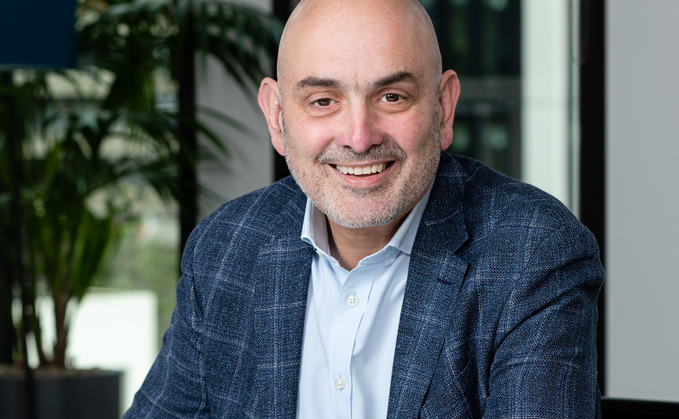
Simon Taylor: Companies with DB schemes should be working with their trustees to agree a journey plan
The number of active members in private sector defined benefit (DB) and hybrid pension schemes has fallen 62.6% in ten years, latest data from The Pensions Regulator (TPR) shows.
The regulator's annual landscape report on DB and hybrid schemes for 2021/22, found that as of March this year there were 785,744 active private sector DB and hybrid scheme memberships in the UK, down from 909,502 the previous year - a decline of 13.6%.
It said the number of active members in such schemes has fallen from the 2.1 million revealed in the TPR's first such report in 2012 - a fall of 62.6%.
TPR's report also found that, in the public sector there were 6.83 million active members of DB schemes in 2021/22, down from 7.48 million in 2020/21.
Evelyn Partners financial planning director Gary Smith said the message for today's private sector workforce is that they have to take responsibility for their pensions and take retirement planning seriously.
He said: "These figures lay bare the private-public sector divide in pension provision, with the vast majority of workers in the private sector responsible for funding most of their pension saving and taking the investment risk.
"Public sector workers continue to benefit from pensions that are more heavily subsidised and pay-outs that are pretty much guaranteed - even if income levels in retirement are largely no longer based on final salary, but rather on career averages."
In total the proportion of schemes open to new members fell from 10% in 2021 to 9% this year, while the number of those closed to future accrual rose to 50% from 48% last year - putting this category of scheme in the majority for the first time.
Lane Clark & Peacock partner and head of research David Everett said: "Today's report from TPR provides further evidence of the steady decline in DB and hybrid provision in the private sector, with the number of schemes continuing a year-on-year decline since 2012 and only 9% of schemes now open to new members.
"By contrast the position is far rosier in the public sector. The 6.8 million individuals building up benefits in the public sector stands in stark contrast to the 0.8 million being able to do so in the private sector. While private sector DB provision is increasingly a legacy issue, the future does not have to be entirely defined contribution (DC). It is now more important than ever that the government comes forward with its proposals on how it will expand the collective defined contribution regulatory environment."
Invesco head of UK pensions and Europe, Middle East, and Africa consultant relations Sachin Bhatia agreed that accelerated DB maturity showed the pressing need for innovation in DC.
He said: "The report highlights the importance of shifting more pensions and investment industry focus towards innovation around DC retirement savings. It's critical that DC schemes and investment providers collaborate to increase member options around alternative investments as well as ESG and sustainable focused investment options. Member engagement is key and can be increased through digital solutions and better post-retirement solutions."
Sponsor dilemma
Isio director Ian Cochrane said the regulator showed how the DB landscape continues to evolve as more schemes improve their funding position, close to new accruals, and begin to look at end game options.
He said: "The regulator's latest figures only run to 31 March 2022, but after the turbulence of the last few months, we have seen a rapid acceleration of DB scheme maturity. Many DB pension schemes have ended up much closer to being able to fully insure their liabilities, a target that before may have been considered unachievable in the short term.
"For sponsors, this can present a dilemma. They would like to take the opportunity to remove the pension scheme from the balance sheet for good, but do not want to risk overfunding the scheme by closing the gap too quickly and finding insurer pricing has moved favourably. In many cases a surplus in a scheme cannot be returned to the sponsor and even if it can be it comes with a 35% tax charge.
"Therefore, we are seeing a renewed interest in escrow arrangements, where the sponsor puts cash aside for the scheme so that amounts not needed for buyout can easily be returned. We expect this to further accelerate in 2023 as sponsors and trustees prepare for the path to buyout."
Barnett Waddingham partner Simon Taylor agreed the report highlights the need for schemes to plan for endgame.
He said: "TPR's new report on the UK landscape for defined benefit (DB) schemes shows a continued increase in the number of closed schemes, prompting more sponsors to think about the ultimate endgame to get schemes off their books. Funding levels looks stable, but it must be said that the data ends in March, before what was a volatile year in the global economy, and the UK gilt market especially.
"Our latest end gauge index gives an average time for FTSE 350 schemes to reach buyout funding as just under six years, as of end of November. A recent fall in long-term inflation expectations meant liability values have decreased, and this more than offsets the impact of the slight hit to bond yields this month."
He added: "Moving into 2023, companies with DB schemes should be working with their trustees to agree a journey plan that takes the needs of all stakeholders (members, employees, shareholders etc) into account, so that the scheme and the sponsor can safely negotiate the economic uncertain times ahead. A good liability and investment strategy would mean FTSE companies no longer need to worry about DB schemes come 2030."
Insurance capacity
Standard Life managing director of DB solutions and reinsurance Kunal Sood said he expected the positive outlook for schemes would lead to a rise in insurance deals.
He said: "Following the significant rise in yields and market volatility in the second half of the year, we would expect even more schemes to now be in a funding surplus. We anticipate this will lead to many schemes pursuing de-risking transactions on an accelerated timeframe as trustees aim to secure the opportunity afforded by a material improvement in funding levels.
"While scheme liability sizes have continued to fall with rising interest rates, there is still a significant opportunity for the pension risk transfer market, estimated to be worth c.£1.4tn in liabilities, with c.10% of that currently insured. We expect demand will continue well into 2023 and beyond, with most schemes continuing to target insurance as the gold standard endgame strategy."
Despite this, Broadstone chief actuary David Hamilton said insurer capacity rather than funding position is likely to now be the biggest hurdle preventing many of these smaller schemes from reaching their endgame.
He said: "A huge number of smaller schemes are now in a position where buyout is a viable conversation. The figures from TPR only take us to March and we know from our own client base that a significant number of schemes have seen major funding improvements over the past six months as a result of increased gilt yields, with less well hedged schemes being the biggest winners.
"However, whilst TPR's figures show that almost 80% of the fully funded schemes at 31 March have fewer than 1,000 members, that still leaves 500 larger schemes that were fully funded in March, and potentially more now. Given the limited capacity for transactions in the market, with the time involved in a deal not being proportionate to its size, larger cases are likely to dominate the attention of most insurers."









